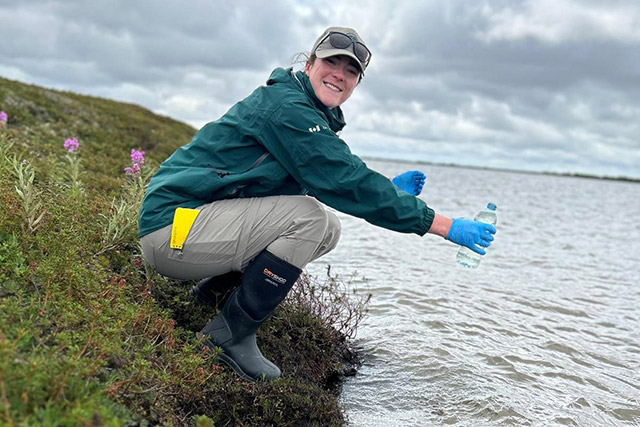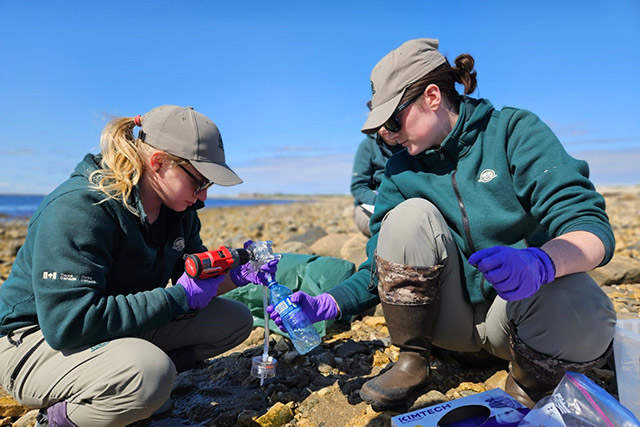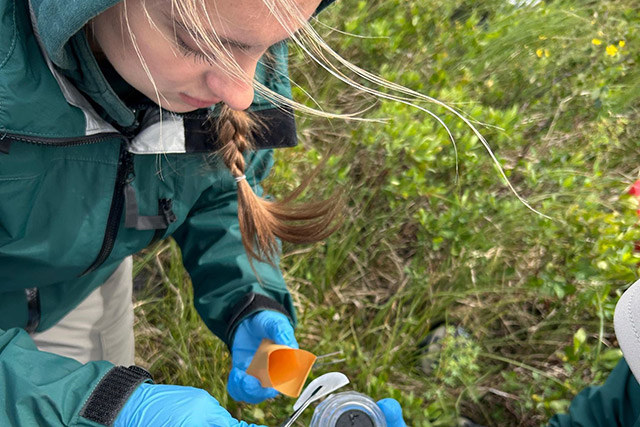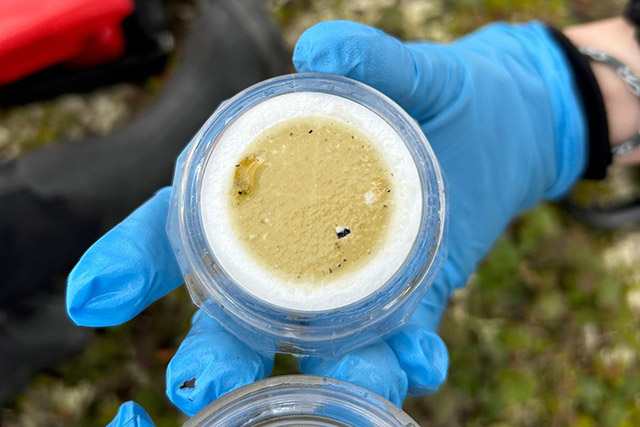Environmental DNA helping Parks Canada establish “fin-ventory” of fish species in Wapusk National Park
Wapusk National Park
Wetlands cover 80 per cent of Wapusk National Park, but the species inhabiting these bodies of water have never formally been documented, so there is still plenty to learn about these vital habitats.

However, environmental DNA (or eDNA) technology is making it easier for researchers like Acting Ecologist Team Lead Erica Gillis to find out which creatures live in Wapusk's many lakes, rivers and creeks.
“Everything in the environment, including animals and fish, shed DNA all the time,” Gillis says. “eDNA is a way for us to get samples through the environment, so from water or soil or sediment, we can pick up DNA from animals and organisms that have been in the area to get a little more information on them.”
In the case of the work in Wapusk, which is focused on fish, researchers are collecting water samples which encompasses everything from scales to mucus to urine and feces.
Traditional knowledge and anecdotal information have confirmed the presence of 10 species across eight locations in the park, while there are several other species expected to be verified through eDNA testing. However, some of the sightings are not particularly recent, with the latest recorded sighting of Arctic grayling — one of Gillis’ favourite fish — being in 1975.
With Wapusk being a coastal park, researchers are also interested in the presence of anadromous fish (also known as fish that migrate from saltwater to freshwater for spawning) such as char and trout.
Why is this research important?
There are quite a few reasons why this research is vital to perform. The first, quite simply, is to know exactly which species are being protected in the park.

“We should know what fish are in there,” Gillis says. “If there are changes in the fish communities, we’ll have a baseline for what was here in 2023.”
The data could extend beyond just fish and may provide insight into the diets of carnivores — such as river otters, wolverines, eagles and sea birds — that may be feeding on the fish species in the park.
Additionally, the information collected will help indicate the health of the rivers and lakes as the climate changes by reflecting the success of fish in key spawning areas.
“We know so little that everything is interesting about it,” Gillis says. “We can answer a lot of questions.”
The testing process
The research team was made up of four people: two Parks Canada technicians, one researcher from the Genomic Network for Fish Identification, Stress and Health (also known as GEN-FISH), and a Parks Canada bear monitor.

Being the first time that the crew had completed testing in Wapusk, 2023 served as an opportunity to pilot the process in eight of the lakes in the park. The team opted to test the larger lakes that are thought to be deeper. Many lakes in Wapusk freeze solid to the bottom in winter, so deeper lakes are more hospitable to year-round life.
The team collected samples over the course of two days in July 2023, flying to each site via helicopter.
The testing process is fairly simple, using a roller pump (also known as a peristaltic pump) connected to a hand-controlled drill.
The team starts by completing one sample from a water bottle as a negative control – “because, ideally, there’s no fish in your drinking water,” Gillis quips with a laugh. “After that, you take three samples at the same site, filter them onto a small piece of filter paper, which is what collects the DNA. You fold it up, put it into a preservative, and then we ship our samples out.”
While the collection process was originally anticipated to take about an hour, in practice, it’s closer to 20 minutes.

The minimal equipment required also includes a cooler for storing samples. With a lack of cargo space in a chopper, it’s important to travel light.
Team members must take some considerations before heading out into the field to avoid contaminating the samples, such as avoiding eating salmon leading up to the collection or bringing tuna sandwiches for lunch.
Looking ahead
The team is anticipating receiving its results from this past summer back in 2024 and plans for collecting more samples are in the works.
The second round of sample collection will focus on rivers, with mid-summer dates being targeted to hit peak fish presence.
Related links
- Day in the Life – Cracking the code with eDNA
- Love, Loss, and Raptors
- A Day in the Life – Goose Banding
- Pick of the Season: Blueberry Jam
- Pick of the Season: Cranberries
- Churchill is the Greatest: 3 more reasons Time Magazine was...
- Cape Churchill Caribou Scat Collection
- Pick of the Season: Fireweed jelly
- Pick of the Season: Labrador Tea
- Pick of the Season: Snow goose
- Join the Pod: 5 facts about beluga whales in Manitoba
- She can dig it: Cultural Resource Management Advisor Sandra...
- Date modified :